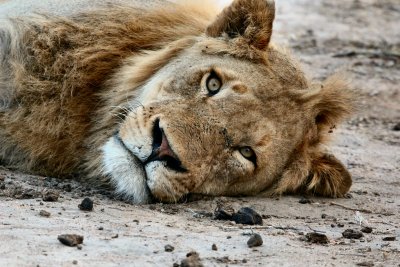News
Latest Lion Aid News
South Africa's cruel and widely condemned lion bone trade involves questionable business partners
Monday 23rd July 2018
|
The South African Department of Environmental Affairs recently signed off on an export quota of 1,500 lion skeletons, up from 800 skeletons they approved last year.
The 800 quota derived from the 2016 CITES conference of parties, where a diversity of African nations placed a proposal to add African lion to CITES Appendix 1, prohibiting all commercial trade. The CITES parties (member states) did not get to vote on this issue, as a backroom “compromise” was brokered by the European Union delegation. That compromise read that there would be no further CITES trade in “wild lion” parts, but that South Africa would continue to be allowed to export lion parts from their captive bred populations (as if anyone can tell whether a lion bone comes from a captive source or a wild source).
Also, the EU compromise allowed further trophy hunts of wild lions as CITES has still not decided whether trophy hunting is trade or just an activity that individuals engage in for private satisfaction. Tanzania, Zimbabwe, Zambia, Mozambique, Namibia etc consistently list the “benefits” of lion trophy hunting to their national coffers, meaning that it of course “trade”.
Anyway, the SA quota was now written on the lion headstone, and the South African CITES authorities were handed the “golden fleece” to provide whatever lion skeleton (and other product) exports they thought fit with the all-important CITES stamps in quintuplicate.
The other “concession” handed to South Africa on a silver platter was that South African authorities alone were to determine future export quotas, the only qualification being that SA was to “notify” CITES of their quotas. South Africa made a weak promise that such quotas would be based on “science”.
It has now been revealed that most of the lion skeleton export quota heads to Laos and Vietnam, and that many of the importing “partners” are either fictitious entities or those connected to known illegal wildlife traffickers.
Indeed, CITES took the unusual step some time ago to place both Laos and Vietnam on their “watch list” of countries significantly involved in the illegal trade of a great diversity of species. While South Africa would claim that all lion skeleton exports are perfectly legal, they should have a duty of care to ensure that their business partners are legitimate. Otherwise such trade could even fall under the category of “aiding and abetting” illegal enterprises?
Also interesting is that Edna Molewa, the SA minister of environment, signed memoranda of understanding with both Laos and Vietnam some time ago concerning the illegal trade of rhino horn and other wildlife products. What was “understood” in those memoranda seems to remain a closely guarded secret. Why this is so is inscrutable can only be because it is likely to contain only verbiage and promises to work together to “prevent” illegality in trade. No responsibility on either side to take definitive action when trading partners are not so trustworthy.
And there we stand.
Until, hopefully, South Africa, now under immense national and international pressure, will climb down from allowing these trade agreements with rather shady partners.
Tags: Lion, lions, CITES, EU, South Africa, lion bone trade, Laos, Vietnam, Categories: Events/Fundraising, Extinction, Domesticating Animals, Economics of Wildlife |
Posted by Chris Macsween at 13:55
No comments have been posted yet.
Add a new comment
Existing user
New user sign up




